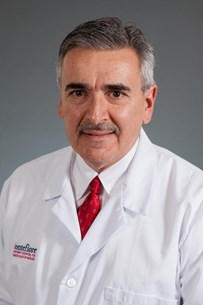Meeting
2012 ASCO Annual Meeting

Albert Einstein College of Medicine, Bronx, NY
Joseph A. Sparano , Anne O'Neill , Robert James Gray , Edith A. Perez , Lawrence N. Shulman , Silvana Martino , Sunil S. Badve , Frederick L. Baehner , Barrett H Childs , Carl N. Yoshizawa , Steve Rowley , Nancy E. Davidson , Steven Shak , Lori J. Goldstein
| Hazard ratio (HR)*, 95Cl, p- value** 5 yr |
5-yr DFS |
Hazard ratio (HR)*, 95Cl, p value** 10 yr |
10-yr DFS |
|||
|---|---|---|---|---|---|---|
| AT | AC | AT | AC | |||
| Overall DFS | 1.02 (0.86-1.22), 0.78 | 85% | 85% | 1.02 (0.88-1.18), 0.83 | 77% | 77% |
| ER+ | 0.89 (0.71-1.12), 0..32 | 87% | 88% | 0.91 (0.76-1.10), 0.34 | 78% | 79% |
| ER- | 1.24 (0.95-1.62), 0.12 | 81% | 77% | 1.22 (0.96-1.56), 0.11 | 76% | 71% |
| OS | 1.06 (0.85-1.31), 0.62 | 92% | 91% | 1.03 (0.86-1.23), 0.73 | 85% | 84% |
*HR>1 favors AT; **based on log-rank test.
Disclaimer
This material on this page is ©2024 American Society of Clinical Oncology, all rights reserved. Licensing available upon request. For more information, please contact licensing@asco.org
2012 ASCO Annual Meeting
Poster Discussion Session
Breast Cancer - Triple-Negative/Cytotoxics/Local Therapy
Breast Cancer
Cytotoxic Chemotherapy
NCT00003519
J Clin Oncol 30, 2012 (suppl; abstr 1021)
10.1200/jco.2012.30.15_suppl.1021
1021
13
Abstract Disclosures
2023 ASCO Annual Meeting
First Author: Charles Geyer
2024 ASCO Gastrointestinal Cancers Symposium
First Author: Anant Ramaswamy
2024 ASCO Gastrointestinal Cancers Symposium
First Author: Takahiro Tsushima
2022 ASCO Annual Meeting
First Author: Martin McCabe